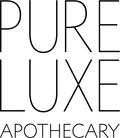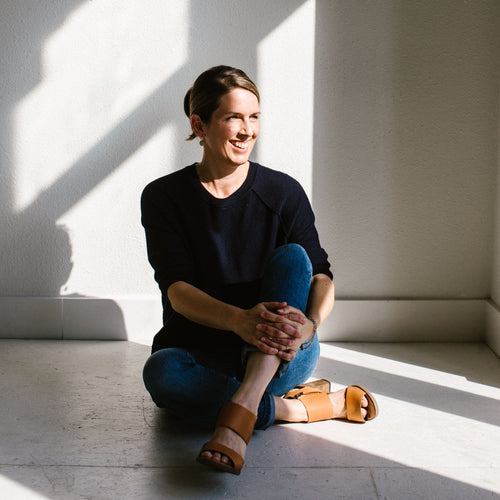Good news! In recent years, more and more people are seeking out clean products.
What does that mean? Consumers want transparency and non-toxic ingredients from the products and brands they choose. What was once a niche market trend is steadily shifting towards the mainstream norm, especially in the beauty industry. Hurray!

If you’re thinking about cleaning up more of the products you use, particularly skincare products, you might be wondering ‘where do I start?’ Knowing how to navigate the options and messaging can be daunting. Heading towards the health + wellness section of a shop is a great direction to start. But it’s not always enough. Choosing products based on descriptive language and appearance alone can be misleading. An example:
Imagine spotting a new lotion in your favorite shop. It’s labeled ‘natural’ and ‘herbal.’ Seaweed, green tea extract, and hibiscus flowers are featured ingredients. It smells great, feels great, and has a beautiful botanical image on the bottle. The packaging implies quality, and the price feels reasonable. It fits your budget. (And it also happens to be the perfect color and style for your bathroom.) BUT. Hang on.
Ultimately, the one thing that really matters when choosing a product? That most important thing to know?
The Full Ingredient List.
The full ingredient list tucked away on the back of a box or label isn’t terribly exciting. It’s overshadowed by all the pretty packaging, colors, names, and claims. But it truly is the most important piece. Because that ‘natural’ product may also contain a long list of less-than-desirable ingredients. Some downright harmful.
As we wade through the messages and persuasion we’re bombarded with every day - from print media, social media, advertisements, commercials, peer pressure, latest trends, sales pitches, value claims - it’s easy to get distracted. The latest, greatest advances are often pretty appealing. Who doesn’t want “incredible staying power, the latest scent, color that lasts five times longer, age defying beauty” and so much more?
Believe me, function and effectiveness are absolutely important. So are enjoying the feel or fragrance of a product, good packaging design, and value for money. But in my opinion, none of these things should ever come at the cost of health.
So the first and most important step whenever I’m purchasing products: I read ingredient lists religiously. And you should too. That key detail is your key to making smarter, healthier choices.

Here’s what you need to know:
- In the US, a 'cosmetic product' is anything that goes on the body (think: moisturizers, makeup, cleansers, shampoo and conditioner, deodorant, nail polish, hair dye, lipstick). And “US law does not require cosmetic products and ingredients, other than color additives, to have FDA approval before they go on the market.” (www.fda.gov) So, the primary factors for mass-produced formulas are often cost and giving the consumer a feeling of effectiveness - lots of foaming action, a squeaky clean feel, the latest scientific extract, powerful scent. But not health.
-
US manufacturers are, however, required to fully disclose and list the ingredients used in products, as outlined in the Fair Packaging and Labeling Act. So to really look behind the curtains of fancy marketing claims and bottom lines, all you need to do is flip the product over and check out that list.
- A standard of consistent ingredient-naming exists, called International Nomenclature of Cosmetic Ingredients. It's required on cosmetic labels and allows consumers to identity exactly what’s in a product. Botanical ingredients are listed by both their common and Latin plant names. Example: Neroli (Citrus aurantium) essential oil or Palmarosa (Cymbopogon martinii) essential oil.
-
Some of the worst (and frustratingly oh-so-common) ingredients found in products are parabens, phthalates, triclosan, sodium laurel sulfate or sodium laureth sulfate (SLS, SLES), mineral oil, petroleum, formaldehyde, propylene glycol, and synthetic fragrances. A basic Google search will highlight why these are the bad guys you should always avoid. Keep these on your ‘no-go’ list.
-
Manufacturers can blanket label ‘fragrances’ and don’t have to disclose the exact components of a scent, in order to protect their unique or proprietary blend. In most cases, 'fragrance' means synthetic chemicals are used to create a particular scent. Why? Because they're cheaper than actual botanical ingredients. Look for ‘synthetic-free’ on packaging or brand literature to determine whether it’s worth your investment.
Here’s what you do want in a clean beauty product:
Look for actual plant names (in Latin) on the ingredient list. Even though Latin names can sometimes be long and cumbersome to read, it’s still easy to tell the difference between a plant name and a chemical-from-a-lab name. Especially the crazy-long chemical names that are impossible to pronounce. Yikes.
Look for short ingredient lists. My personal philosophy: Less is more. Even though just five or six botanical ingredients in a product seems simple, keep in mind that each individual plant ingredient can be made up of hundreds of complex compounds. And those compounds work synergistically with each other - and with our bodies - to offer holistic, therapeutic benefits.
And for bonus points? Look for plastic-free packaging that supports long-term sustainability efforts: packaging that is recyclable or compostable, doesn't clog landfills, and helps reduce the impact of consumer goods on the environment.

Apply your label-reading skills beyond skincare:
All those label-reading skills and ingredient knowledge you're acquiring? You can (and should) also apply those to cleaning products, lawn care products, candles, air fresheners, laundry products... and food ... and choose health.
The choices we make about the products we buy and use matter. They matter to the environment, our bodies, our quality of life, our children’s lives, and ultimately, whether we choose to perpetuate health or disease.

The good stuff is out there, and I’m proud to be one of the makers putting ingredients and health at the top of the priority list. Creating clean, minimalist remedies that celebrate the intelligence of nature - and eliminate all the unnecessary and artificial ingredients that are harmful to both our bodies and our environment - is my primary purpose.
Pure Luxe Apothecary products are always:
synthetic-free | paraben-free | colorant-free | preservative-free | additive-free | gluten-free | cruelty-free | stress-free
Cheers and happy label reading!
Gratitude always,


